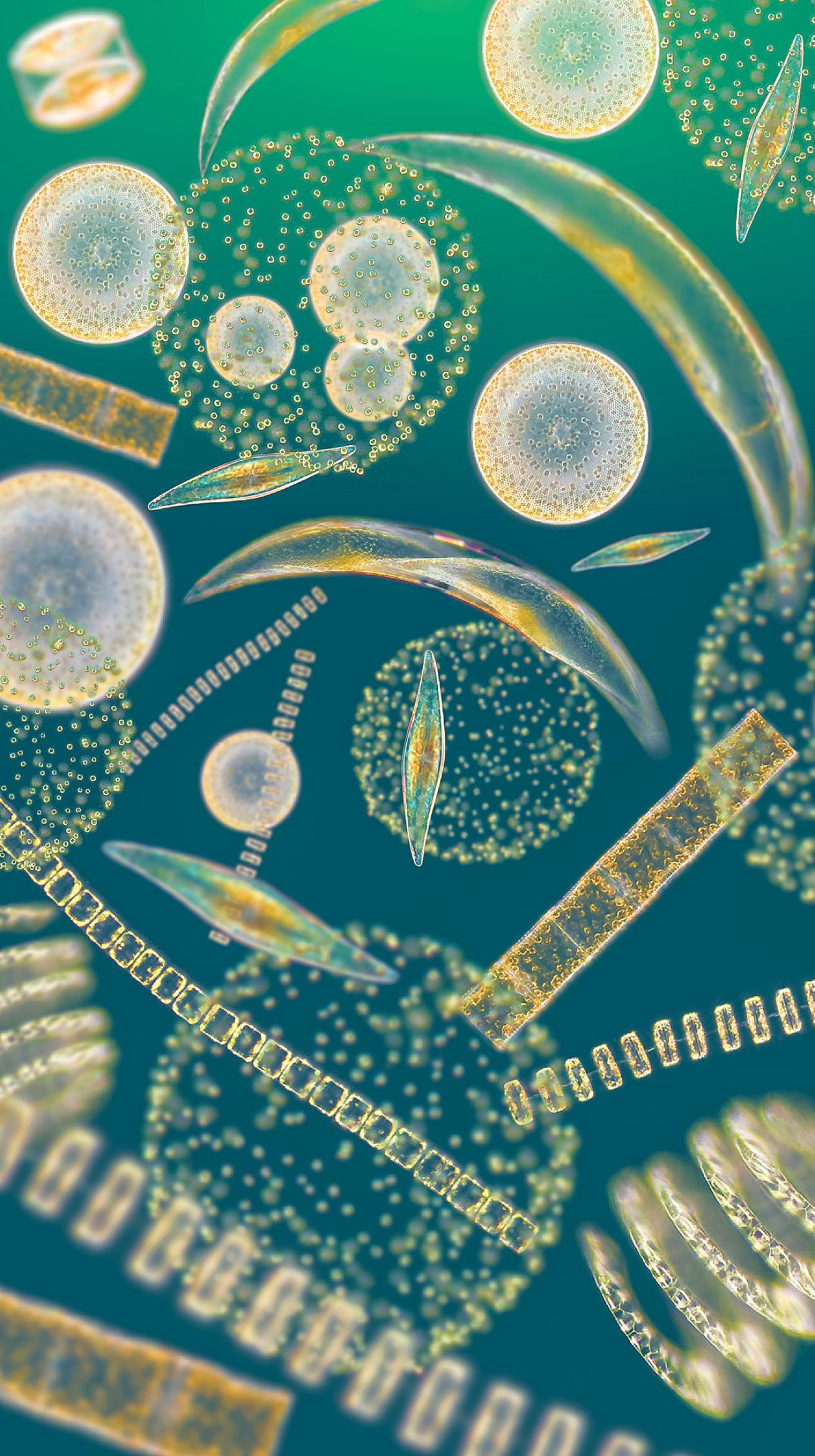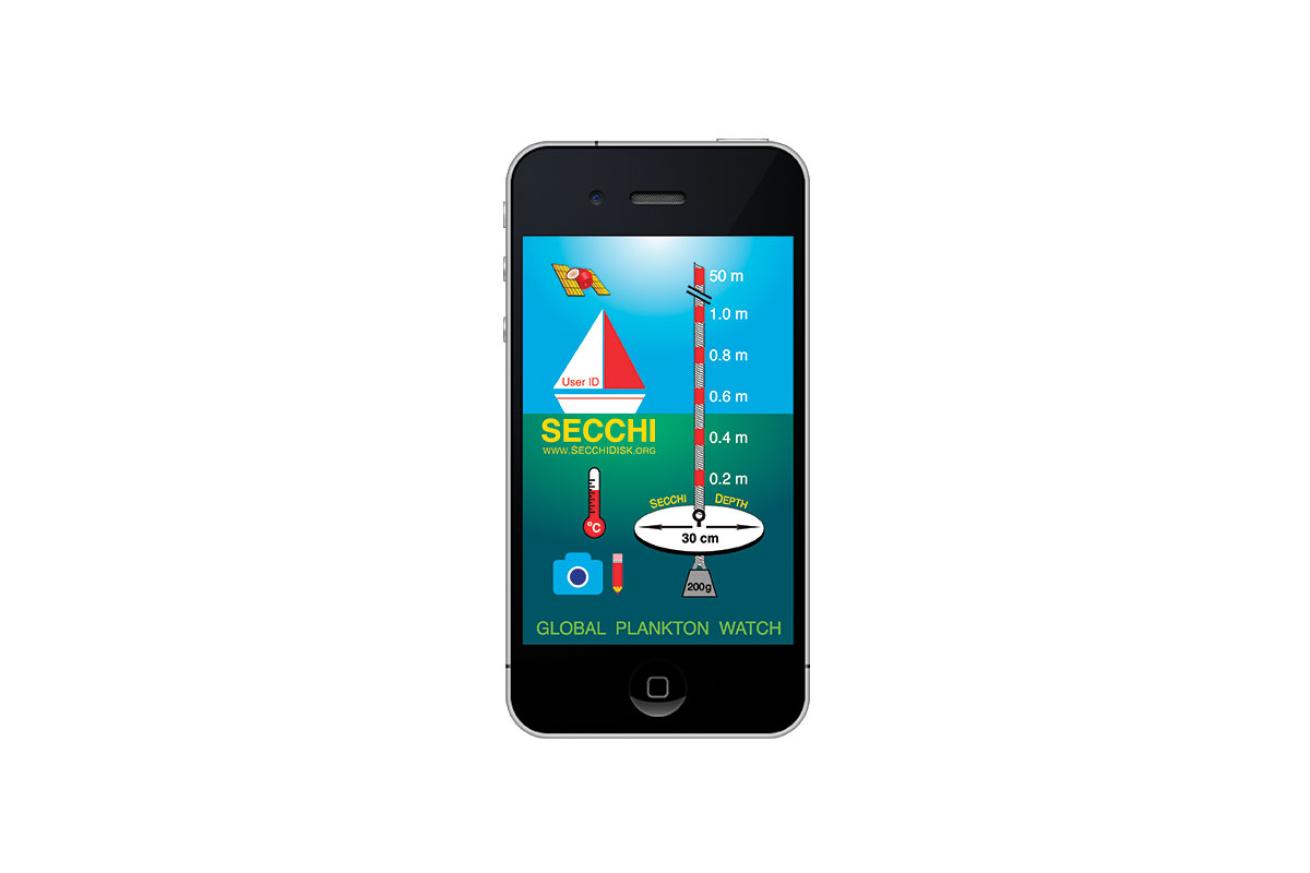Do It Yourself Conservation: How to Count Plankton

Plankton
Although they are tiny, the impacts of plankton are huge. For example, they produce 40-60 percent of the air we breathe!
Courtesy of secchidisk.org
It’s the “dark matter” of the oceans—almost invisible, yet it rules the fate of all our seas, perhaps even planet Earth itself. Plankton makes up one of the world’s smallest categories of beings, yet it plays an enormously large role in life on this planet as the base of the entire ocean food chain. The Greek planktos means wanderer or drifter. Aptly named, these tiny plants and animals are at the mercy of the element that supports them. Phytoplankton produce 40 to 60 percent of the oxygen we breathe and, together with zooplankton, create a food web that supports all other marine life.
Scientists are now studying the effects of climate change — specifically the warming of the sea surface — on all forms of plankton, and the possible dire implications of those effects on the marine food chain.
So much for why you should care. What, you ask, can you do about it?
Divers can participate in what could be the world’s largest marine citizen-science study, a global examination of phytoplankton.
Led by Dr. Richard Kirby, the Secchi Disk Study has succeeded in enlisting sea-farers in all oceans to provide data on phytoplankton health, or lack thereof.
Because phytoplankton live largely at the surface, they’re most susceptible to changes there. A 2010 report suggested there had been a drop of as much as 40 percent in the amount of phytoplankton around the world since the 1950s; other scientists disagreed.
“Part of the controversy stems from a lack of data about marine phytoplankton due to the fact that the oceans are vast, and there aren’t that many scientists to cover them,” Kirby explains. “This is why we launched the citizen-science Secchi Disk project to study phytoplankton.”
The means by which divers and others can participate is called the Secchi Disk, “a plain white disk of 30 centimeters diameter attached to a tape measure and weighted from below.” Participants can make their own disk — for example from a white bucket lid — as long as it is white and 30 centimeters in diameter.

Handheld Citizen Science
How can you get started? Turns out, there's an app for that. It's called Secchi and it's free. The Secchi app includes full instructions on how to make your own disk, and capture and share your data. Find out more at secchidisk.org.
Courtesy of secchidisk.org
By lowering the disk into the water until it just disappears, participants are able to gauge the Secchi Depth, an indicator of water clarity. (In open ocean, that clarity indicates the degree of phytoplankton presence.) Kirby hopes for contributions from travelers on the high seas as well as from citizen scientists who might stake out a single sample site.
“A dive club may choose to set up a sample site and measure the Secchi Depth weekly or occasionally,” says Kirby, “or they can make recordings from different places. Their effort will help us understand the ocean’s biology much better.”

Courtesy of secchidisk.orgPlankton Although they are tiny, the impacts of plankton are huge. For example, they produce 40-60 percent of the air we breathe!
It’s the “dark matter” of the oceans—almost invisible, yet it rules the fate of all our seas, perhaps even planet Earth itself. Plankton makes up one of the world’s smallest categories of beings, yet it plays an enormously large role in life on this planet as the base of the entire ocean food chain. The Greek planktos means wanderer or drifter. Aptly named, these tiny plants and animals are at the mercy of the element that supports them. Phytoplankton produce 40 to 60 percent of the oxygen we breathe and, together with zooplankton, create a food web that supports all other marine life.
Scientists are now studying the effects of climate change — specifically the warming of the sea surface — on all forms of plankton, and the possible dire implications of those effects on the marine food chain.
So much for why you should care. What, you ask, can you do about it?
Divers can participate in what could be the world’s largest marine citizen-science study, a global examination of phytoplankton.
Led by Dr. Richard Kirby, the Secchi Disk Study has succeeded in enlisting sea-farers in all oceans to provide data on phytoplankton health, or lack thereof.
Because phytoplankton live largely at the surface, they’re most susceptible to changes there. A 2010 report suggested there had been a drop of as much as 40 percent in the amount of phytoplankton around the world since the 1950s; other scientists disagreed.
“Part of the controversy stems from a lack of data about marine phytoplankton due to the fact that the oceans are vast, and there aren’t that many scientists to cover them,” Kirby explains. “This is why we launched the citizen-science Secchi Disk project to study phytoplankton.”
The means by which divers and others can participate is called the Secchi Disk, “a plain white disk of 30 centimeters diameter attached to a tape measure and weighted from below.” Participants can make their own disk — for example from a white bucket lid — as long as it is white and 30 centimeters in diameter.

Courtesy of secchidisk.orgHandheld Citizen Science
How can you get started? Turns out, there's an app for that. It's called Secchi and it's free. The Secchi app includes full instructions on how to make your own disk, and capture and share your data. Find out more at secchidisk.org.
By lowering the disk into the water until it just disappears, participants are able to gauge the Secchi Depth, an indicator of water clarity. (In open ocean, that clarity indicates the degree of phytoplankton presence.) Kirby hopes for contributions from travelers on the high seas as well as from citizen scientists who might stake out a single sample site.
“A dive club may choose to set up a sample site and measure the Secchi Depth weekly or occasionally,” says Kirby, “or they can make recordings from different places. Their effort will help us understand the ocean’s biology much better.”










